A couple hundred miles west of Lake Michigan brought us to the burg of Sparta. Population just over 10,000, and the home of a couple of interesting tidbits.
We are in site 11 in the Whiskey Creek Family Campground. In spite of predictions of heavy rain, the weather is warm and wonderful. Perhaps a bit humid for some of us, but nice.
Our route today kept us on Wisconsin state highways and county highways for the most part, but the roads were not as crowded as we expected on a holiday weekend and that was a good thing!
We navigated through the southern end of Green Bay, took Interstate 41 south toward Oshkosh, and bailed off onto highway 21, going through Omro, Redgranite, Wautoma, Coloma, and picked up Interstate 90 in Tomah before finding Sparta. It was a nice drive through Wisconsin farms and forest. Forest? Yep, in fact Sparta depended on timber and logging activities for much of it’s early commerce. Today silica sand is a major resource and numerous supporting industries focus on that. In fact, U.S. Silica Company operates a facility just a mile or so from our park.
Silica is a more pure form of common sand, and is strictly monitored for impurities like iron oxide. Who knew?
Just north of town, FAST fiberglass is one of very few companies that fabricate fiberglass structures used in advertising, playgrounds, and amusement parks. We stopped by and were pleased to talk to the father of the owner. Back in the day, temporary structures were carved by hand from plaster or other easily formed materials, and were known as “plugs”, and a fiberglass cover was laid over that to act as a mold for the required piece. Nowadays, computers, 3D printers and CNC machines create the mold, but human work is required to “lay up” the fiberglass and actually create the object.
Molds, some decades old, inhabit a “boneyard”, waiting for reuse if necessary. We had to take a walk.
The tabs seen on this mold are used to assemble the structure but the fiberglass is laid up on each piece individually, and then standard auto body techniques are used to assemble them.
After assembly, the object is sprayed with an undercoat prior to final painting.
One of the rather plain, disassembled molds turned out to be a huge whale that customers of a drive through carwash used! Didn’t find that out until we had already passed by, but I remember a huge grin…!
Sparta is known as “The bicycling capital of America” due to being the intersection of two long bicycle trails, one of which was the first in the country: a 32 mile of former railway between Sparta and Elroy, WI. The towns central park commemorates this, and is the actual intersection of the two trails.
The forecast was for rain and 85 degree heat, and we saw the storm clouds approaching.
And, indeed, it absolutely poured down for a half hour, and then returned to partly cloudy skies and 85 degree heat, and then back to thunderstorms.
Sparta is also the home of astronaut Deke Slayton, and a museum has been established to honor him and the towns bicycle history. Deke was one of the original Mercury Seven astronauts and was scheduled to pilot the second manned earth orbital mission but was sidelined due to atrial fibrillation, a heart irregularity. He went on to become Chief of the Astronaut Office and Director of Flight Crew Operations for NASA. He passed away in 1993.
At the entrance to the Deke Slayton Memorial Space and Bike Museum, housed in a former Masonic Temple, stands a statue of Astronaut Slayton.
The museum is a bit short on astronaut stuff, other than displaying a jacket that he wore in his racing days, and an interesting item about his aircraft noise violation just after he died…
Astronaut Slayton left a solid reputation as a dedicated and focused leader in the early space race days and his mantra was:
The better part of the museum was dedicated to bicycles, since Sparta has a stellar reputation as a biking capital. We were greeted by a sculpture put together by Bob Mack, who rode around the world to raise money for Multiple Sclerosis.
The Trek bicycle company commissioned this awkward bike. It never caught on.
This 1934 Mead Ranger still has original tires!
Occasionally the six foot tall bicycles were a bit difficult to mount!
There have been some very interesting designs over the years.
This 1800’s childs tricycle was ridden for years in Menomonie.
Leaving the museum, we headed south into some of Wisconsins iconic farmland and a distinct Amish flavor.
This area was missed by the great glaciers of 11,000 years ago, leaving rolling hills and fertile valleys, ideal conditions for farming.
We were pleased to see that the Amish have established roots here, and enjoyed the rhythmic sound of horses hooves clip-clopping.
We drove through several small farm communities, but the population of Melvina made an impression on us.
We’ve enjoyed our short stop in Sparta, Wisconsin, and we are leaving with a sense of community in a small midwest city and the surrounding agricultural area. It’s comforting. And, for what it’s worth, the corn is growing at least a foot a day!


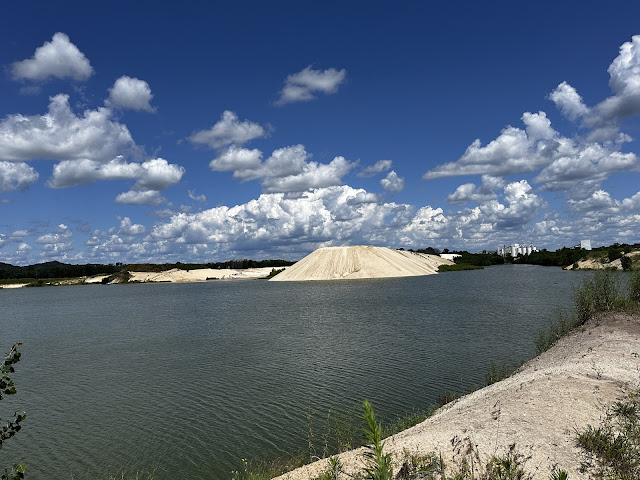



























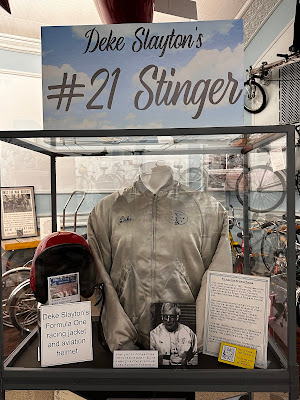

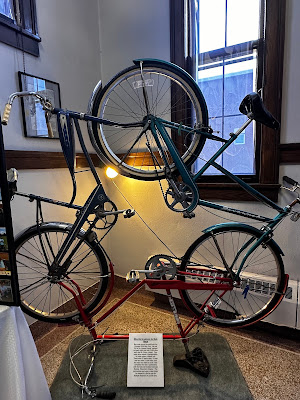




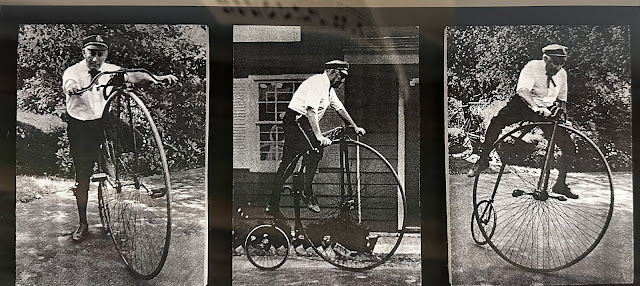








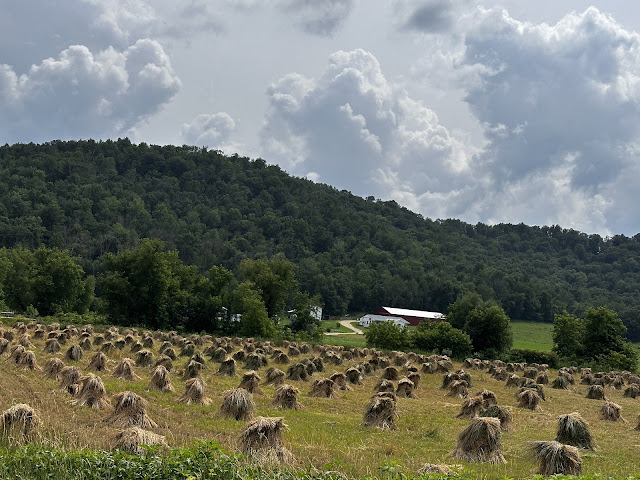


No comments:
Post a Comment